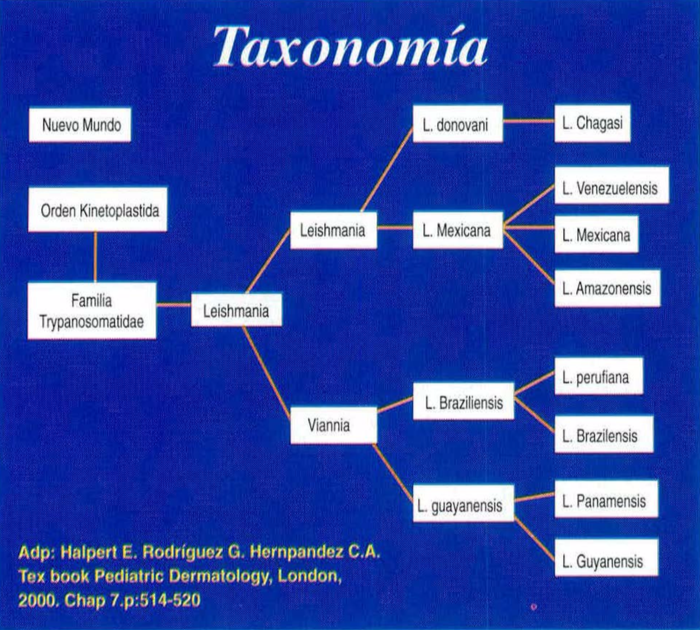Inmunología de la Leishmaniasis cutánea americana
Palabras clave:
Leishmaniasis cutánea americana, inmunologíaResumen
La Leishmaniasis es una zoonosis producida por un protozoo flagelado del género Leishmania spp, que infecta los macrófagos del hospedero y se transmite por la picadura de un insecto flebotomíneo. Se caracteriza por un espectro de manifestaciones clínicas, histológicas e inmunológicas que dependen de la respuesta del huésped, la duración de la enfermedad y la especie involucrada. El conocimiento de la respuesta inmune, en la patogénesis de esta enfermedad, es importante para el desarrollo de nuevas alternativas terapéuticas como la inmunoterapia, y para el desarrollo de vacunas que buscan prevenirla.
Biografía del autor/a
Andrés Vidal, Universidad del Valle
RI Dermatología, Universidad del Valle, Cali.
Referencias bibliográficas
Halpert E., Rodríguez G. Hernández CA. Leishmaniasis.
En: Harper J, Oranje A, Prose N. Textbook of Pediatric Dermatology, London 2000:514-526.
Weigle K., Saravia N. Natural History, Clinical Evolution, and the Host-Parasite lnteraction in New World Cutaneous Leishmaniasis. Clin Dermatol 1996; 14:433-450.
https://doi.org/10.1016/0738-081X(96)00036-3
SIVIGILA. Ministerio de Salud. Instituto Nacional de Salud. 2000-2002
Ministerio de Salud. Leishmaniasis. Plan Nacional de Control. Manual de Normas Técnico Administrativas. Bogotá 1994:37-64.
Klaus SN., Frankenburg SF. Leishmaniasis and other protozoan infections. En: Freedberg IM., Eizen AZ., Wolff K., et al. Fitzpatrick's Dermatology in General Medicine. McGraw-Hill, New York 1999:2609-2619.
Kalter DC. Laboratory tests for the diagnosis and evaluation of Leishmaniasis. Dermatol Clin 1994; 12:37-50.
https://doi.org/10.1016/S0733-8635(18)30200-6
Handman E. Interaction of Leishmania with the host macrophage Trends in Parasitology 2002; 18: 332-334.
https://doi.org/10.1016/S1471-4922(02)02352-8
Turco S., Spat G., Beverley S. Is lipophosphoglycan a virulence factor? A surprising diversity between Leishmania species. Trends in Parasitology 2001; 17:223-226.
https://doi.org/10.1016/S1471-4922(01)01895-5
Muskus C., Marin M. Metaciclogénesis: un proceso fundamental en la biología de Leishmania. Biomédica 2002; 22:167-177.
https://doi.org/10.7705/biomedica.v22i2.1156
Robledo S., Wozencraft A., Saravia N . Human monocyte infection by Leishmania Viannia panamensis. J Immunol 1996; 152:1265-1275
Abbas AK. Inmunidad innata. En: Abbas AK., Lichtman AH., Pober JS. Inmunología Celular y Molecular, Madrid, McGraw-Hill 2002:280-302.
Rogers KA., De Krey GK., Mbow ML. Type 1 and type 2 responses to Leishmania majar. FEMS Microbiology Letters 2002; 209:1-7.
https://doi.org/10.1111/j.1574-6968.2002.tb11101.x
Convit J., Pinardi ME., Rondan AJ. Diffuse cutaneous Leishmaniasis: A disease due to an immunological defect of the host. Trans R Soc Trap Med Hyg 1972; 66:603-610.
https://doi.org/10.1016/0035-9203(72)90306-9
MelbyP.RecentdevelopmentsinLeishmaniasis. Current Opinions in infectious Diseases 2002; 15: 485-490.
https://doi.org/10.1097/00001432-200210000-00005
Sacks D., Noben-Trauth N. The immunology of susceptibility and resistance to leishmania and resistance to leishmania majar in mice. Nat Rev Immunol 2002; 2:845-858.
https://doi.org/10.1038/nri933
Abbas AK. Citoquinas. En: Abbas AK., Lichtman AH., Pober JS. Inmunología Celular y Molecular, Madrid, McGraw-Hill 2002:243-279.
Chang KP., Reed S., McGwire B., et al. Leishmania model far microbial virulence: the relevance of parasite multiplication and pathoantigenicity. Acta Tropica 2003; 85:375-390.
https://doi.org/10.1016/S0001-706X(02)00238-3
Castes M., Tapia F J. lnmunopatología de la Leishmaniasis tegumentaria americana. Acta Cientif Venez 1998; 49:42-56.
Agudelo S., Robledo S. Respuesta inmune en infecciones humanas por leishmania spp, IATREIA 2000; 13: 167-178.
Lenis AM. La respuesta celular inmune en la Leishmaniasis cutánea americana. Biomédica 1998; 18: 274-284.
https://doi.org/10.7705/biomedica.v18i4.998
Turetz M., Machado P., Ko A, et al. Disseminated Leishmaniasis: A new and emerging form of Leishmaniasis observed in Northeastern Brazil. J lnfect Dis 2002; 186:1829-1834.
https://doi.org/10.1086/345772
Romero GA., Guerra MV., Paes MG., et al. Comparison of cutaneous Leishmaniasis due to Leishmania (V) braziliensis and L. (V) guyanensis in Brazil: therapeutic response to meglumine antimoniate. Am J Trap Med Hyg 2001; 65:456-465.
https://doi.org/10.4269/ajtmh.2001.65.456
Palacios R., Ochoa MT., Osorio LE., et al. Treatment failure in children in a randomized clinical trial with 1O and 20 days of meglumine antimoniate for cutaneous Leishmaniasis due to Leishmania viannia species. Am J Trap Med Hyg 2001; 64:187-193.
https://doi.org/10.4269/ajtmh.2001.64.187
Convit J., Castellanos P.L., Ulrich M., et al. Immunotherapy of localized, intermediate and diffuse forms of American cutaneous Leishmaniasis. J lnfect Dis 1989; 160:104-115.
https://doi.org/10.1093/infdis/160.1.104
Rodríguez G. Leishmaniasis difusa. Revista Asociación Colombiana de Dermatología & Cirugía Dermatológica 2000; 8:33-40.
Heinzel FP., Shoenhaut DS., Rerko RM., et al. Recombinant interleukin 12 cures mice infected with Leishmania majar. J Exp Med 1993; 177:1505-1509.
https://doi.org/10.1084/jem.177.5.1505
Nabors GS., Alfonso LCC., Farrell JP. Switch from type 2 to type 1 helper cell response and cure of established Leishmania majar infection in mice is induced by combined therapy with IL-12 and P entostam. lmmunol 1995; 92:3142-3146.
https://doi.org/10.1073/pnas.92.8.3142
Handman E. Leishmaniasis: current status of vaccine development. Clin Microbio! Rev 2001; 14:229-243.
https://doi.org/10.1128/CMR.14.2.229-243.2001
Valenzuela J., Belkaid Y-, Garfield M,. et al. Toward a defined anti-Leishmania vaccine targeting vector antigens: characterization of a protective salivary protein. J Exp Med 2001; 194: 331-342.
https://doi.org/10.1084/jem.194.3.331
Morris R., Shoemaker C., David J., et al. Sandfly Maxadilam exacerbates infection with Leishmania majarand vaccinating against it protects against L.majar infection. J lmmunol 2001; 167:5226-5230.
Cómo citar
Descargas

Descargas
Publicado
Cómo citar
Número
Sección
| Estadísticas de artículo | |
|---|---|
| Vistas de resúmenes | |
| Vistas de PDF | |
| Descargas de PDF | |
| Vistas de HTML | |
| Otras vistas | |






